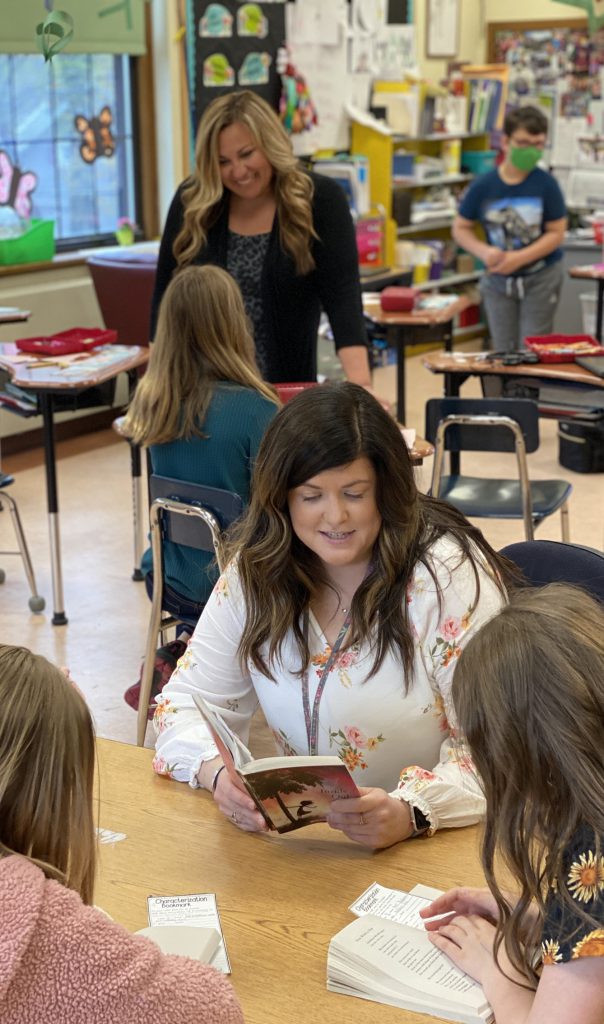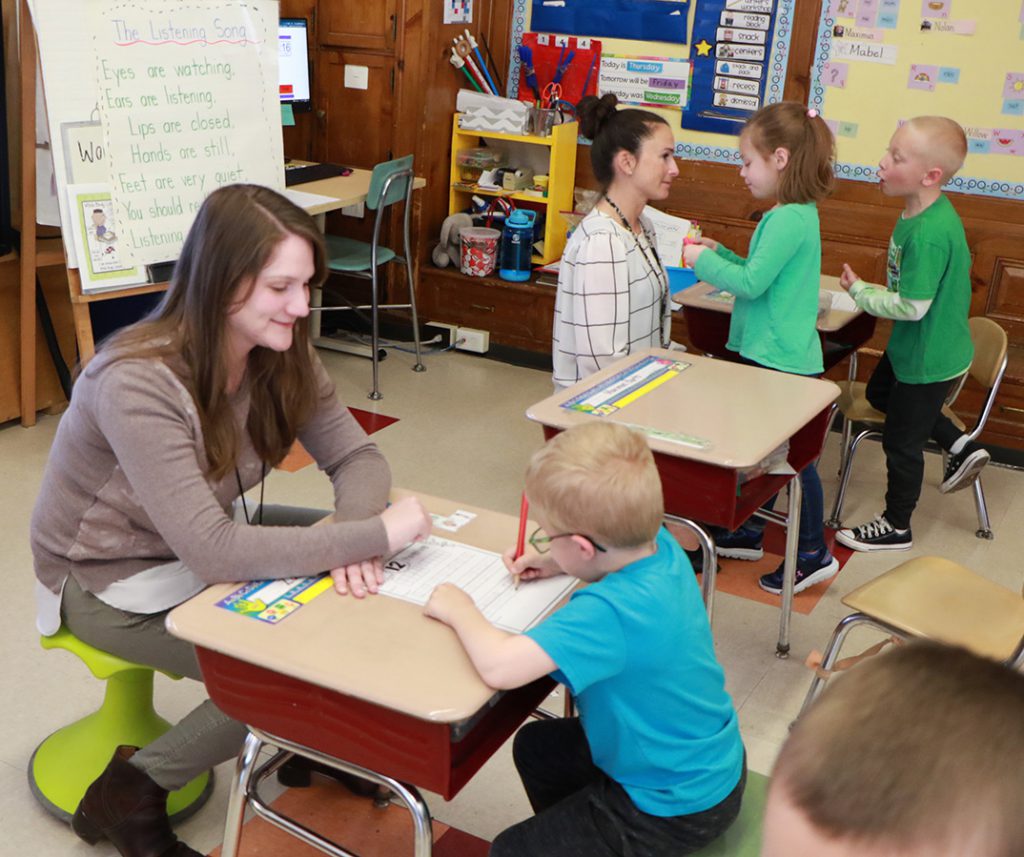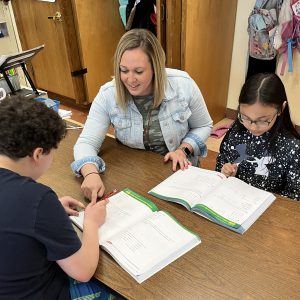 “The best thing about teaching an inclusive class is seeing acceptance firsthand,” says Jackson Heights kindergarten teacher Jessica Elder. “Kindergartners are so genuine and will make friends with anyone, so it is really wonderful to see all of our students playing together.”
“The best thing about teaching an inclusive class is seeing acceptance firsthand,” says Jackson Heights kindergarten teacher Jessica Elder. “Kindergartners are so genuine and will make friends with anyone, so it is really wonderful to see all of our students playing together.”
Fourth-grade teacher Amanda Burt at Big Cross agrees. “What’s great about inclusion is seeing a diverse group of students come together and form bonds/friendships and support each other—not only academically but in other ways too.”
An inclusive classroom is a general education classroom where students with and without learning differences learn together. Inclusive classrooms are welcoming and support the diverse academic, social, emotional, and communication needs of all students.
Two years ago, Glens Falls City Schools began promoting inclusion through a direct consultant teacher model. This gives students the support of two teachers in a classroom—one who is an expert on the content and curriculum, and one who is an expert at helping all kids access all curriculum and learn alongside their peers of the same age or grade level.

Launching this new approach was important for two reasons. Foremost, the research-backed inclusion classroom strengthens the ability of all kids to work together, understand and value different points of view, think critically, and be successful learners—all of which are reflected and supported in our District Mission Statement and Board of Education goals. Additionally, The IDEA (The Individuals with Disabilities Act) includes a “least restrictive environment” requirement, which directs schools to teach students with special needs within regular education classes (not in special classes, through separate schooling, or other general removal from the regular education environment).
“I believe that learning differently requires teaching differently,” says kindergarten special educator Jacqueline Smith. In the kindergarten classroom she teaches with Jessica Elder, every child gets the support they need to excel. “Jessica and I use station teaching so students are receiving their instruction in small groups that rotate through each teacher’s station,” Mrs. Smith says. “By using the station teaching model we can differentiate our lessons to meet the needs of all learners.”

Bethany Carpenter, a fourth grade teacher at Big Cross, agrees that the inclusion model allows more opportunities for small groups and stronger modeling during lessons. Her team is a two-classroom combo that includes teacher Amanda Burt and special educator Lindsey St. Clair. “I really enjoy planning lessons together because it allows us to bounce ideas off each other in order to deliver the strongest, most creative lessons. We also have a lot of fun together which gives a positive atmosphere for the students to learn.”
Mrs. Elder echoes the benefits of modeling, from both an instructional viewpoint and an interpersonal one. “I learn from Jacqueline everyday, and the students get to see our friendship and working relationship as an example.”
“Coming from a place of mutual respect and allowing each of us to share ideas and a willingness to be flexible has been critical in developing our collaborative style,” says Mrs. St. Clair. “We know that none of us has all of the answers and so we trust each other to trial different things or attempt different approaches if we see something isn’t working. Most importantly, we can make each other laugh and get through the tough moments.”
Special education director Becky Vanderklish can already see the benefits of inclusive schooling. “Research states —which supports our experiences over the last two school years—that positive relationships are one of the strongest indicators of increased growth in students. Particularly after the pandemic disrupted so much learning, we’re seeing both an increased need for support and the early
benefits emerging from our inclusive classrooms that were already in place.”
The budget proposal for 2022-23 includes several teaching, aide, and assistant positions so that adults and students will have more time to work together collaboratively, further individualizing instruction.
Ms. Burt notes, “as the saying goes ‘two heads are better than one’ and I think we can accomplish so much more!”
